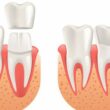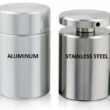Difference Between Reduction and Oxidation
Redox reaction occurs when the combination of different compounds and chemical reactions occur. Reduction oxidation is nothing new it is a natural occurrence for chemical reactions. Reduction involves the recharging of electrons and oxidation; it simply means the discharge of electrons. The change in the oxidation and reduction happens when the number of atoms changes. The process of these chemical reactions can be complicated or simple; it depends on the number of atoms involved.
The decrease in atoms results in low oxidation, which is the loss in oxidation numbers. A gain in atoms is the increase in oxidation. Metathesis reaction is the process where there is no transference of electrons. In reality, the amount of oxidation numbers depends on the increase and decrease of electrons. The loss and gain of electrons determines the balance of oxidation levels. Reduction oxidation alters the reactions between molecules. These reactions can cause molecules to increase or decrease and go through a similar oxidation process. Oxidation is a simple and complex science that we can see in everyday life. Oxidation takes place when two or more chemicals combine and cause a change or reaction in the structure of its subject.
The perfect example of oxidation occurs in an apple slice. Chemical changes are noticeable when an apple starts to turn brown once it is cut and left open. The apple changes texture and color. The same goes for a potato when it is sliced and left out in the atmosphere. Iron is another substance that oxidizes; the surface of the metal is coated with rust once it has been exposed to certain elements. Metals that go through stages of oxidation-reduction experience a change in their structure. For instance, as the rust eats away at the iron and the presence of Zinc results in the reduction of oxide.



